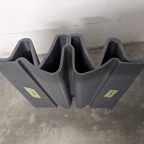
Respondeat Superior in Truck Accidents: What Does it Mean?
Truck accidents are often accompanied by a sea of legal jargon that can be overwhelming. Among them, one term that can make or break the success of your claim is respondeat superior.
If you are unsure of what this legal doctrine means and how it impacts your truck accident case, you are not alone. Let's break it down in simple terms and explore its implications.
If you are involved in a truck accident, you should seek the help of the truck accident lawyers at Alexander Shunnarah Trial Attorneys. They will make sure your case is well handled and all the crucial evidence is preserved. The legal professionals at Alexander Shunnarah Trial Attorneys have won millions in compensation for their clients, with the more notable ones being $12 million for a mass transit bus accident case and $6.5 million for an 18-wheeler wrongful death case.
What is Respondeat Superior?
In Latin, respondeat superior translates to "let the master answer." Essentially, it's a legal principle that holds an employer responsible for the actions of its employees, as long as those actions were carried out within the scope of employment.
In the context of truck accidents, this means that if a truck driver causes an accident while driving for their employer, the employer can be held liable for the damages caused.
How Does Respondeat Superior Apply to Truck Accidents?
Now that we know what respondeat superior means, let's discuss how this principle directly impacts truck accident claims.
Typically, truck accident claims involve both the truck driver and their employer, especially if the driver was working for a company when the incident occurred. Here's how the doctrine applies:
- Employer Liability: If a truck driver is involved in an accident while driving for their employer (for instance, on a scheduled delivery), the company can be held responsible for the accident. Even if the driver was negligent or reckless, such as speeding or texting while driving, the employer may still face legal consequences.
- Protection for Victims: One of the advantages of respondeat superior is that it provides justice to victims in the way of fair compensation. Given that employers usually have more capital than individual truck drivers, the settlement may be higher in such cases if the company is brought to book. In extreme car accidents, this may result in a big difference as far as medical expenses and lost wages are concerned.
- Scope of Employment: However, not every incident will give rise to respondeat superior. If the truck driver was not on duty—perhaps using the truck for personal errands or engaging in reckless driving unrelated to their job—then the employer may not be held liable. In such cases, proving the scope of employment becomes key in determining liability.
Practical Implications for Truck Accident Claims
When filing a claim after a truck accident, knowledge of respondeat superior can make all the difference in the outcome. You may be able to pursue compensation from both the truck driver and their employer, potentially increasing the total amount of your settlement. The employer's insurance may also come into play, helping cover damages like medical expenses, pain and suffering, and lost income.
However, respondeat superior does not promise that the employer is liable all the time. For example, proving that the driver was at work when the accident occurred might make the case very complex. If a driver was acting outside of their professional duties, the employer might not be liable.
Final Thoughts
Respondeat superior is a legal doctrine that helps make employers liable for the actions of their employees. In truck accident claims, if a truck driver is acting within the scope of their job, the company may be held liable for accidents that result from their actions.
It not only makes it easier for victims to get compensated but also makes it easier to go after companies with deeper financial resources.














